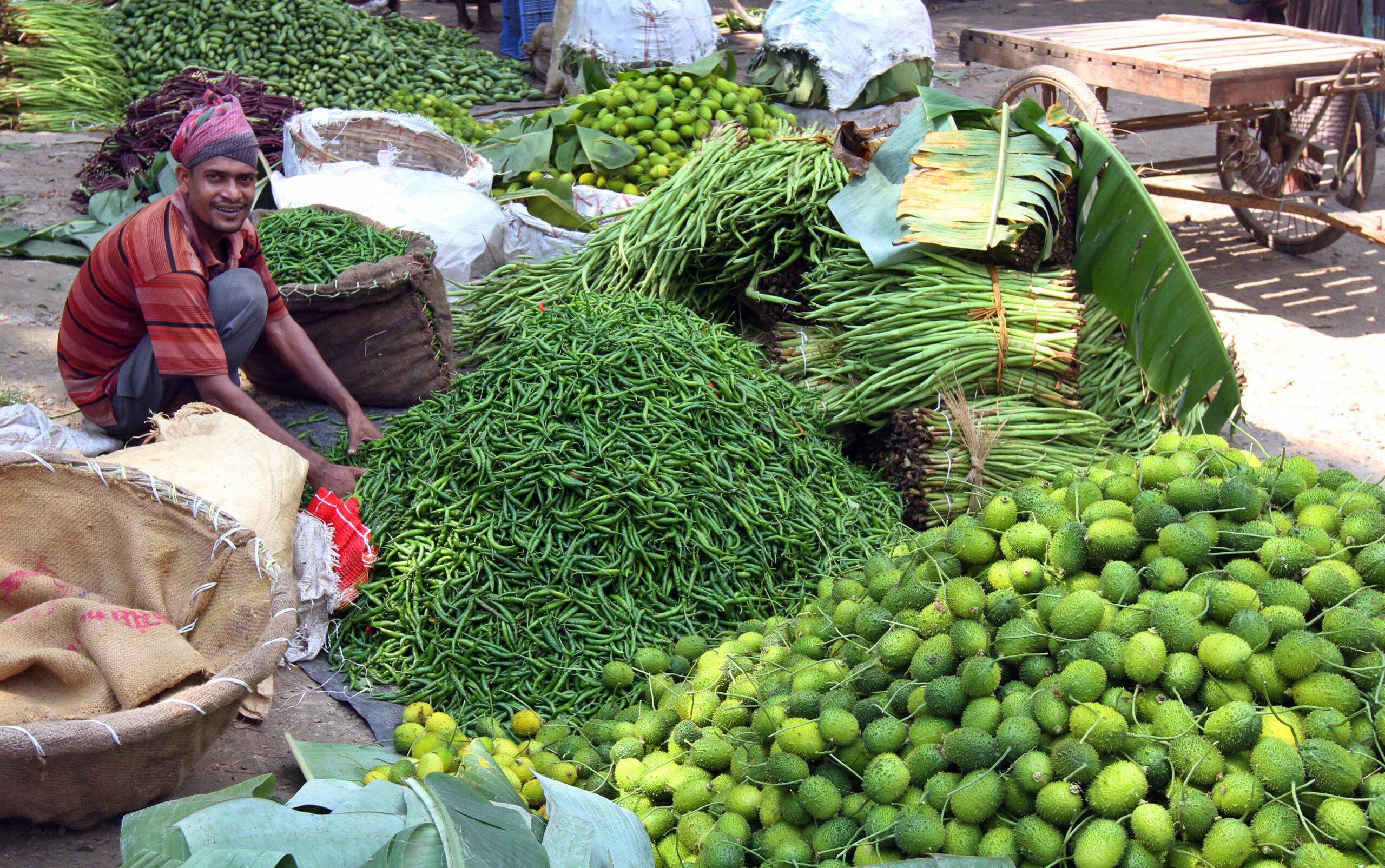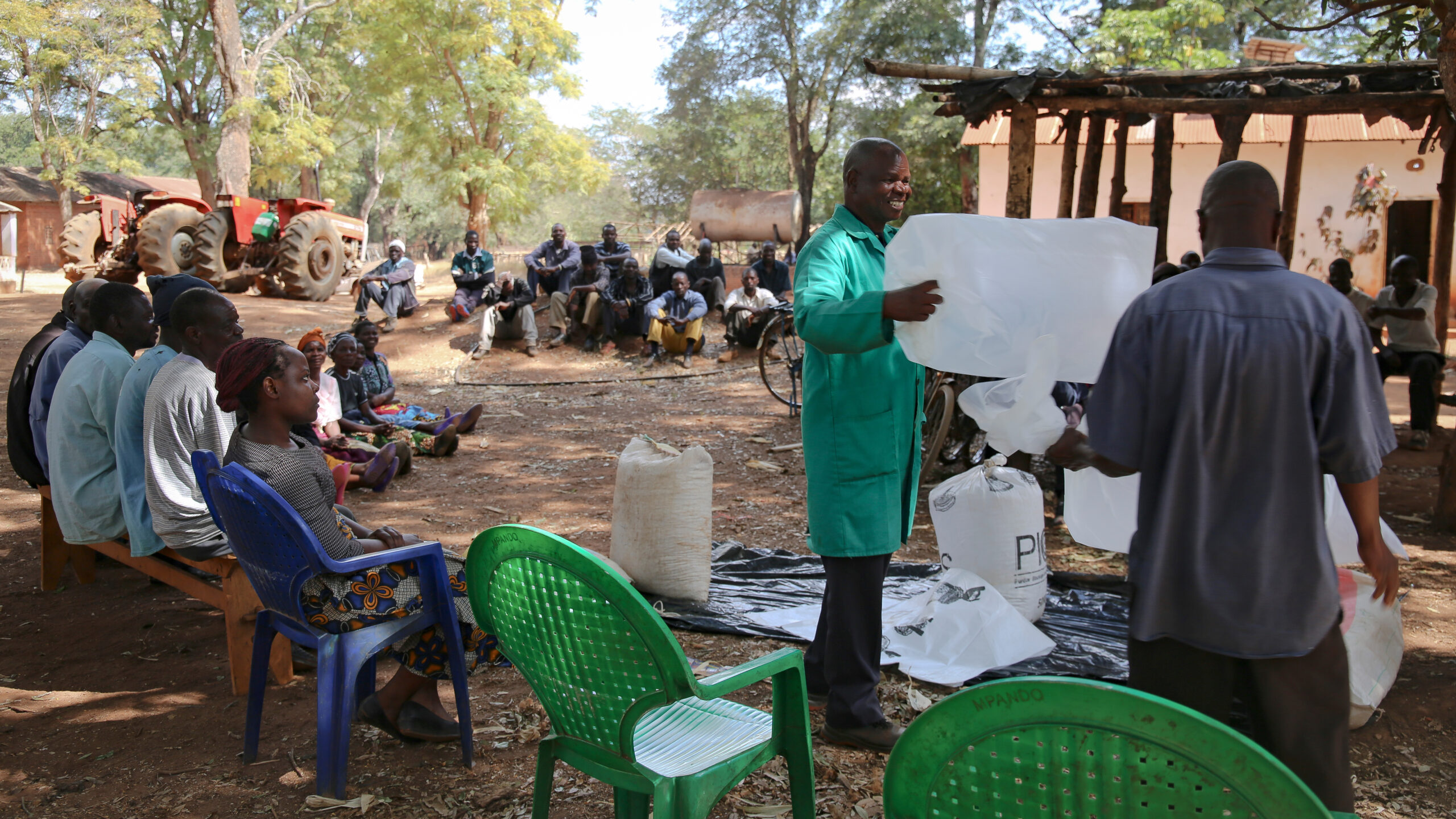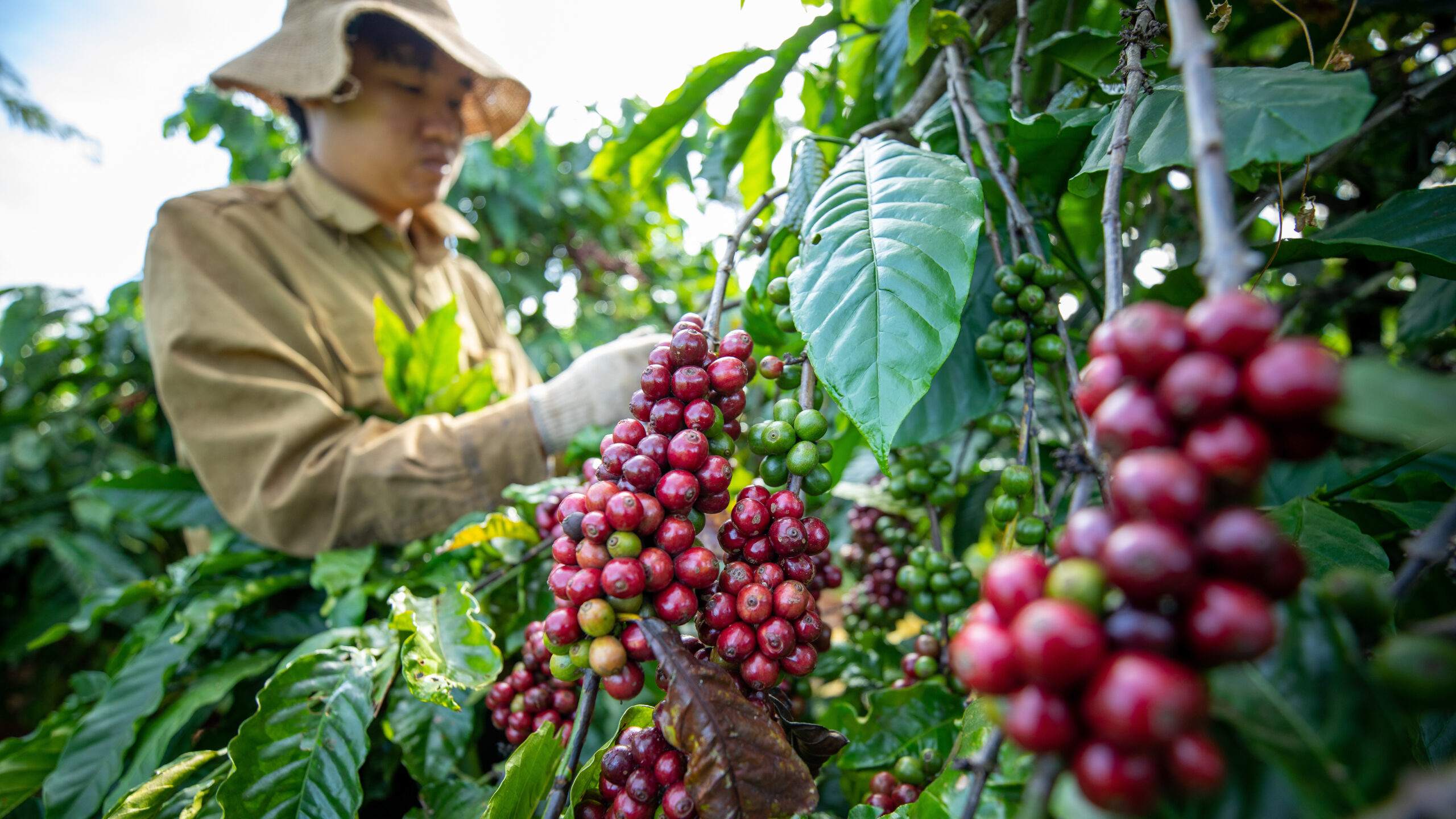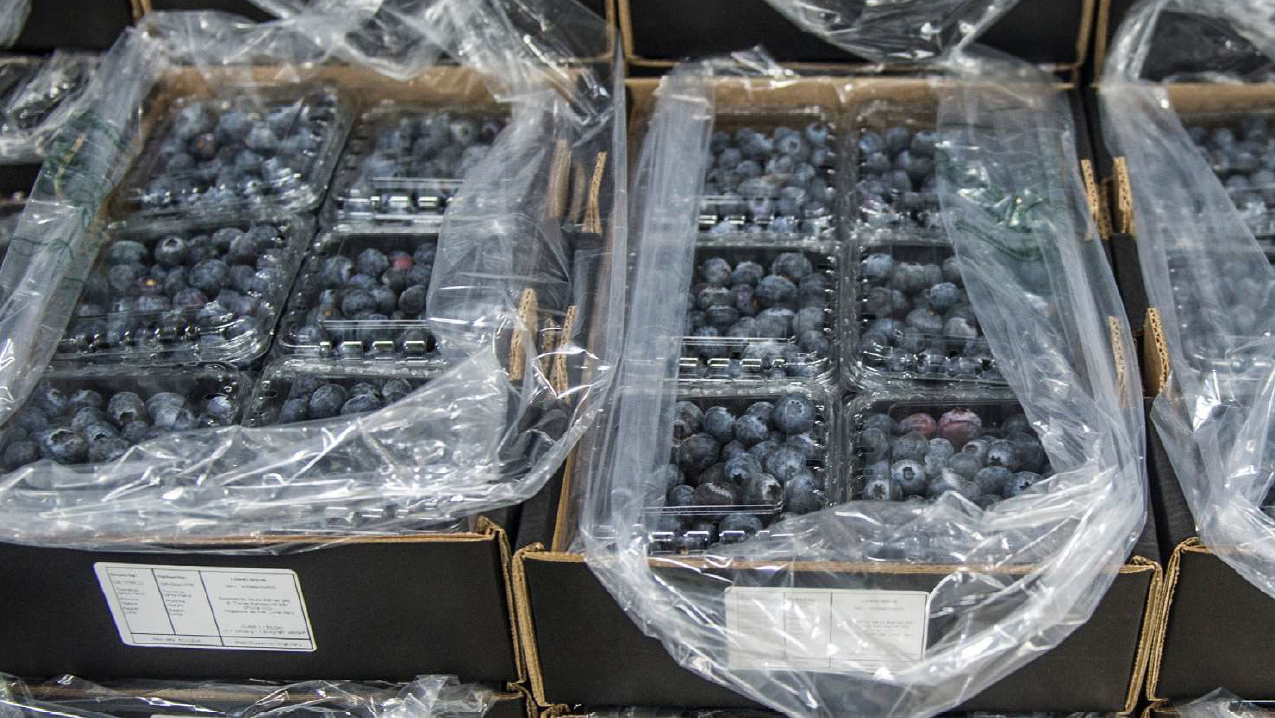IFPRI and its research partners have studied the pace and pattern of agricultural transformation within the U.S. Agency for International Development (USAID) Feed the Future (FTF) countries. A series of 21 case studies were produced that measure each country’s agrifood system, analyze changes over the past decade, and identify common patterns across the countries. James Thurlow, Director of IFPRI’s Foresight and Policy Modeling Unit, highlighted four important lessons from the country studies in a recent USAID Agrilinks webinar. He was joined by Valeria Piñeiro, Acting Head of IFPRI’s Latin American region and Senior Research Coordinator, and Kwaw Andam, Leader of IFPRI’s Nigeria Strategy Support Program and Senior Research Fellow, who shared further insights on the finding’s lessons and applications.
Agrifood system transformation is an essential indicator of progress within the landscape of global development. An agrifood system encompasses all value chains linking production to consumption. It includes primary agriculture, input supply, trade and transport, agroprocessing, and food services. As a country economy evolves, its agrifood system undergoes a profound shift as value chains extend further beyond primary agriculture and downstream activities come to dominate supply chains. This shift is marked by increased incomes and employment in sectors such as food processing and food services.
As Figure 1 shows, in low-income countries (LICs) primary agriculture plays a predominant role, comprising 67.7% of the agrifood system GDP (i.e., incomes) compared to just 17% in high-income countries (HICs). Globally, primary agriculture makes up about one third of agrifood system GDP.
Figure 1
The FTF country studies analyze the drivers of agrifood system growth and transformation. They decompose each country’s agrifood system into its component value chains, and then across the different value chain components. Four high-level lessons emerged from the studies.
Lesson 1: Off-farm growth helps drive agriculture transformation
Primary agriculture still dominates agrifood systems in most FTF countries, especially in LICs. Figure 2 shows a decrease in this share of GDP as a country’s income increases. This highlights a crucial trend: The growth of the agrifood system is propelled by accelerated expansion in off-farm activities. This is encouraging, as off-farm growth consistently aligns with agricultural transformation observed in most FTF countries. As governments design investment portfolios and policy reforms, they should pay attention to contributions to both on- and off-farm income growth and job creation.
Figure 2
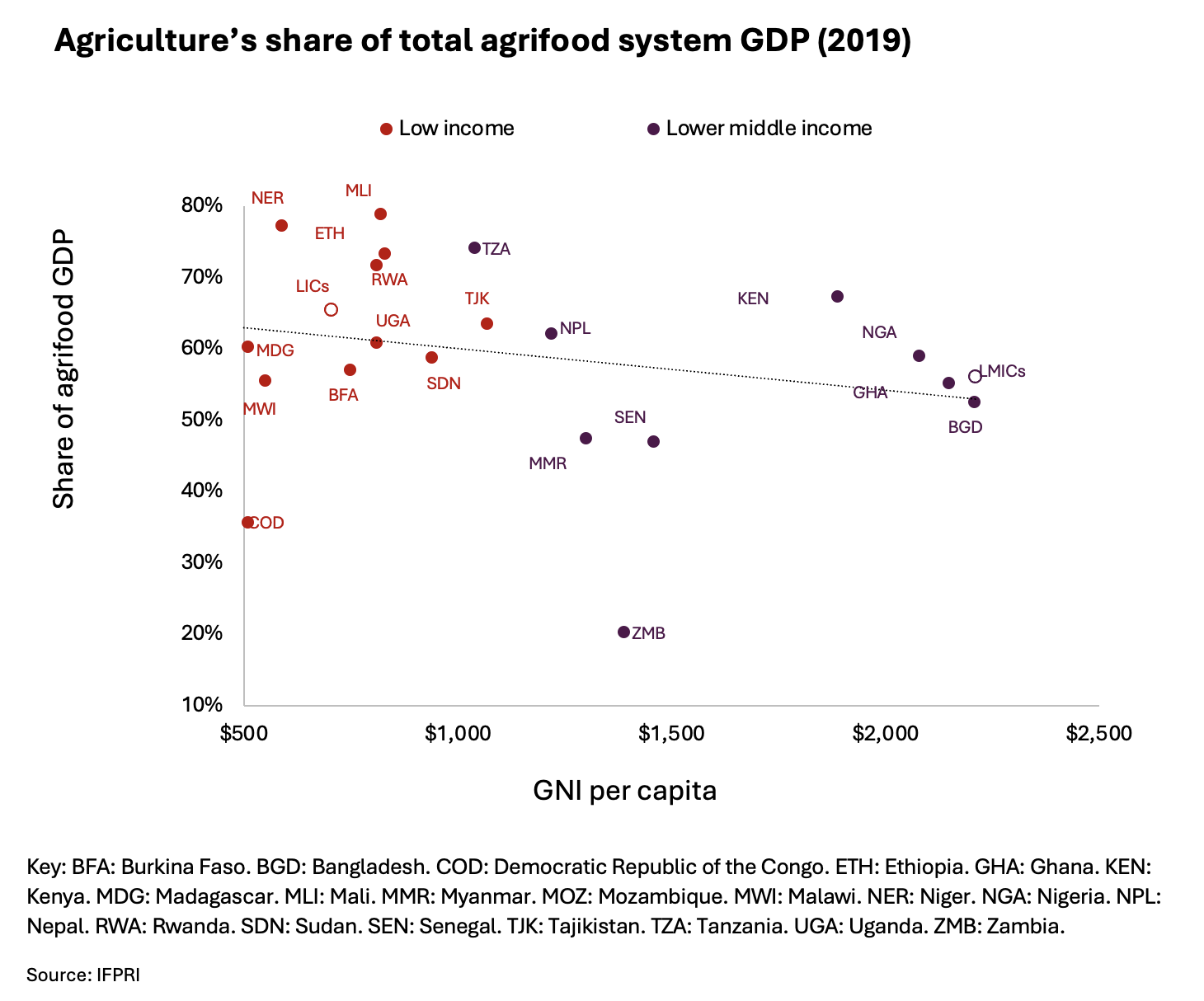
Lesson 2: Agricultural exports are highly concentrated
Across all the country studies, it was apparent that agricultural exports tend to be highly concentrated within a narrow set of value chains. East African exports, for example, are often concentrated in export products like tea, coffee, and tobacco. National agricultural investment plans often focus on building up these exports, assuming they can grow quickly by tapping into global markets. While this is true for certain niche value chains, such as edible oils, in many FTF countries export-oriented value chains have performed poorly compared to the overall AFS. This suggests that diversifying agricultural exports should be a policy priority, and that national agricultural strategies should look beyond exports to drive transformation.
Lesson 3: Domestic-oriented value chains are driving AFS growth
Many of the case studies indicate that, rather than exports, the production of goods for local markets and consumers have expanded most rapidly—suggesting that domestic-oriented value chains play a pivotal role in fueling agrifood system growth. Based on these findings, to target the most promising areas for growth, national agricultural strategies should pay close attention to household consumption patterns in domestic markets, including shifts in demand, income, and dietary preferences.
Lesson 4: Import-substituting value chains could drive transformation
Within domestic-oriented value chains, the FTF case studies suggest that import-substituting products offer significant opportunities to lessen reliance on value addition occurring in other countries and to boost domestic off-farm GDP. Tanzania, for example, relies on imported edible oils, despite its local production of oilseeds. Agricultural investments should promote value chains that substitute for imports, thereby driving agricultural transformation, generating employment opportunities beyond the farm, and improving trade balances.
Overall, the FTF country case studies underscore the importance of focusing on broader agrifood system transformation rather than primary agricultural growth alone. Domestic market opportunities are significant and substituting for imports, rather than just promoting exports, can help drive faster transformation.
Eleanor Jones is a Program Coordinator with IFPRI's Foresight and Policy Modeling Unit.




